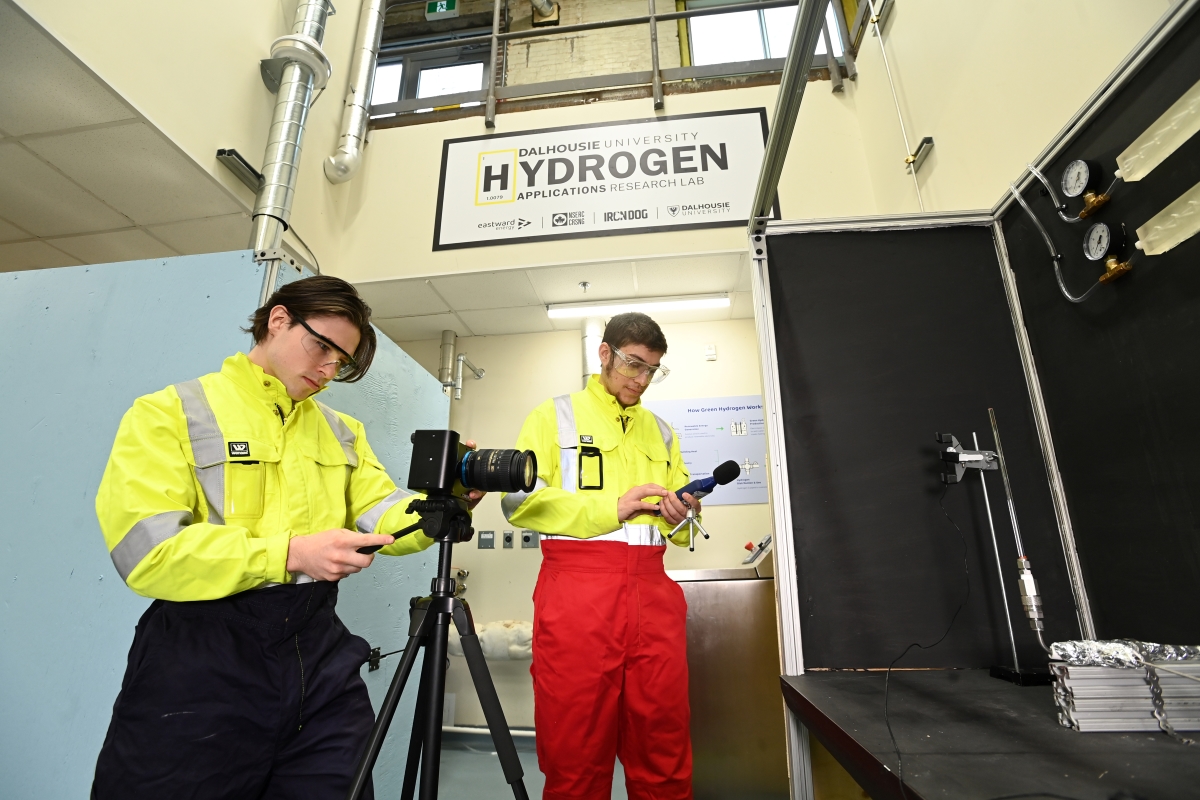News
» Go to news mainUnlocking the power of green hydrogen
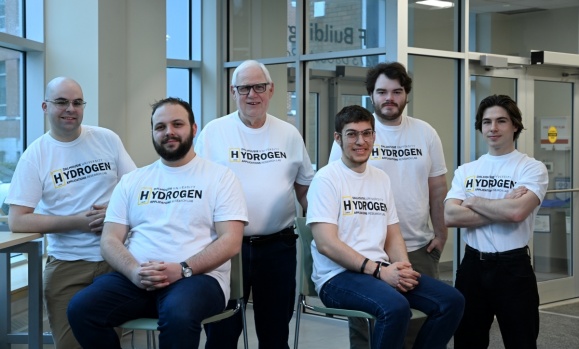
Standing amongst an array of appliances, ±«Óătv Engineering PhD candidate, Theodore Street adjusts the controls on a gas stove and watches as the blue flame begins to burn. This particular stove is running on a blend of natural gas mixed with 5 per cent hydrogen. Itâs one of a dozen different appliances that will be tested in ±«Óătvâs new Hydrogen Applications Research Laboratory.Ìę
In collaboration with local energy provider Eastward Energy, the lab will test the limits of blending hydrogen into Eastward Energyâs natural gas system as well as the use of hydrogen-enriched natural gas in household appliances. Ìę
Ìę
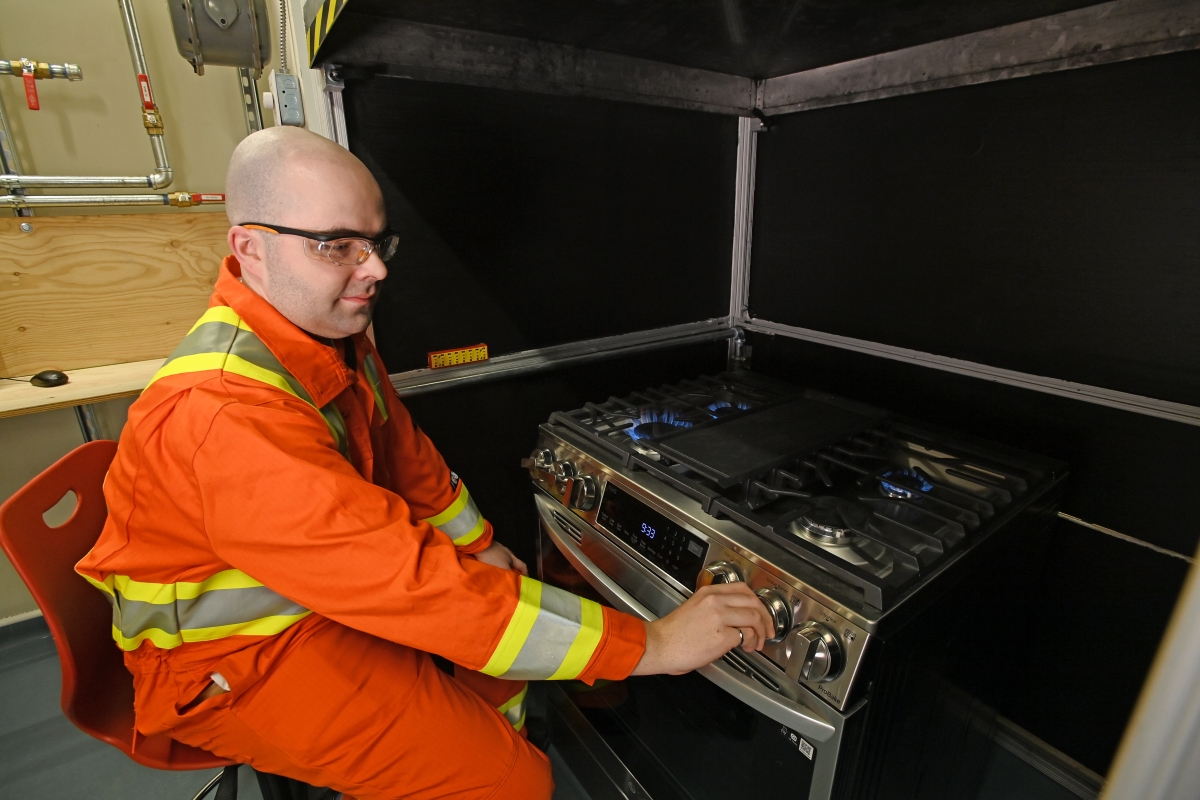
Eastward Energy has contributed $200,000 through an in-kind donation to support ±«Óătv researcher Dr. Michael Pegg and his team in the Department of Process Engineering and Applied Science as they investigate low-carbon solutions for its distribution system, including the distribution of hydrogen-enriched natural gas. The partnership could assist Nova Scotia in its efforts to achieve net-zero greenhouse gas emissions by 2050.
Nova ScotiaâsâŻGreen Hydrogen Action Plan, released in December, lays out guidelines for government and industry in the province in the development of green hydrogen â an alternative clean energy source.Ìę
What is green hydrogen?Ìę
While traditional methods for producing hydrogen use fossil fuels and emit greenhouse gases, green hydrogen is produced using renewable electricity and when it is burned emits only water and heat.Ìę
âWhenever you burn hydrocarbon flames such as methane/natural gas, oil, or anything with carbon in it, it produces CO2, which is a greenhouse gas. If you burn hydrogen in air, you donât produce any CO2,â explains Street. From undergrad co-op programs to PhD candidates, Street is one of several students working side by side on this ground-breaking initiative.Ìę
Ìę
Within the lab, Street points out several different types of appliances designed for natural gas including water heaters, a gas fired barbecue, gas stove, patio heater and more.Ìę Ìę
Ìę
âWe are going to be testing appliances that havenât been tested before, and weâre looking primarily at operability limitsâ he says. Their team is ready to push the boundaries, searching for that âsweet spotâ where the most hydrogen can be seamlessly integrated into the natural gas network without disruption or consequence to daily lives.Ìę
Testing hydrogen blendsÌę
Theyâll start with a modest 5 per cent hydrogen blend, monitoring factors such as appliance temperatures and gas compositions to ensure everything runs smoothly. Slowly, they plan to increase hydrogen levels, pushing appliances to their limit. The goal is to find that balance where efficiency meets safety.Ìę
âWe are standing here by a water boiler that would be used for underfloor heating or baseboard radiators,â says Street as he points out a row of boilers sitting along the back wall of the lab. âPreviously published literature says thereâs quite a wide range depending on the unit. Anywhere from 10-90 per cent hydrogen can be mixed in,â he continues. âSo we have to test all sorts of different types of boilers and water heaters.âÌęÌę
While innovative, the research comes with many challenges. Hydrogen, for example, with its high flame speed, presents unique problems. Ìę
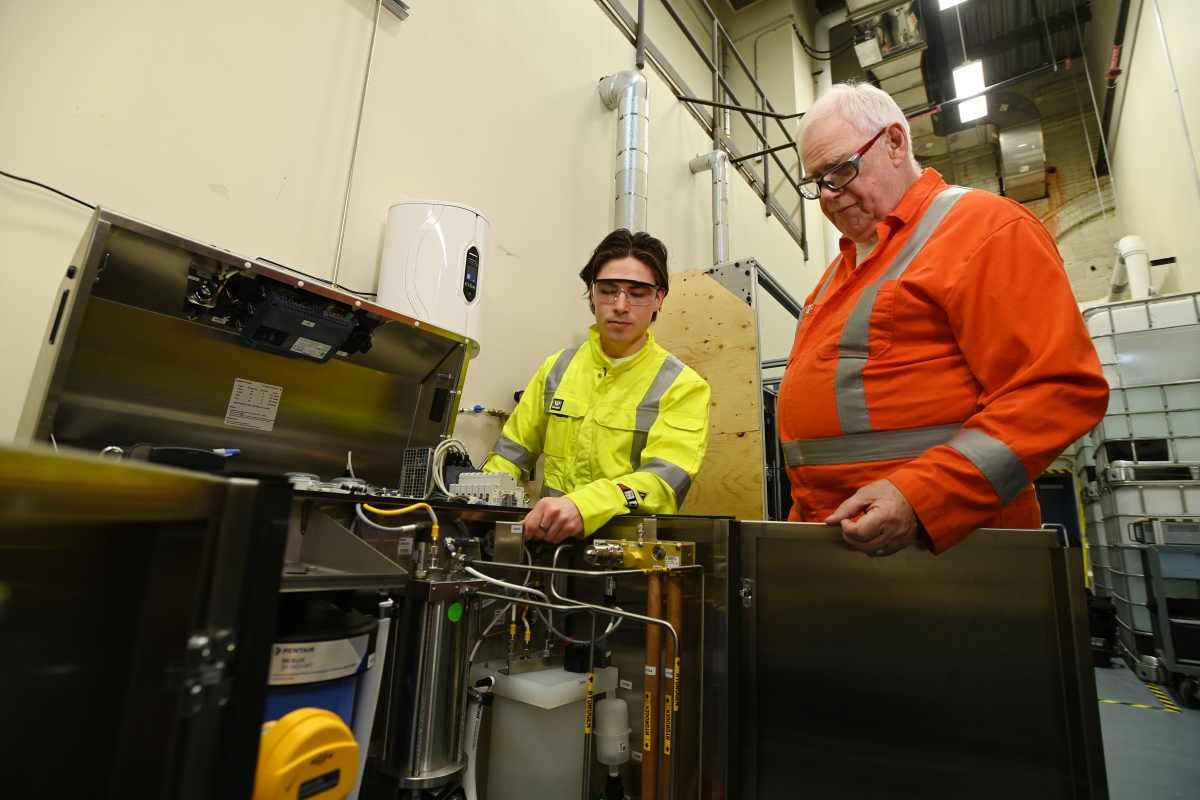
âOne of the biggest issues with hydrogen and natural gas is that at really high blends sometimes the flame can be unstable,â says Street. âHydrogen flames are a little bit hotter and they sit a little bit closer to the burner tip. If you turn off the burner, sometimes the hydrogen flame can travel back into the burner tip.âÌę
Ìę
That causes something they call flashback; a sudden pop which could signal trouble.Ìę
Ìę
âFlashback is mostly a concern when you have a pre-mixed fuel air mixture. If you have air and fuel and the flame flashes back, it can flash back for as long as thereâs air and fuel and it could cause detonation,â says Street. âFor most natural gas appliances, it wouldnât flash back that far because itâs not pre-mixed. The air is injected into the appliance burner quite late. But for modern high-efficiency boilers and water heaters they use pre-mixed burners which are more prone to flashback. Thatâs an area weâre very interested in researchingâÌę
Ìę
As the lab continues blending hydrogen with natural gas one appliance at a time, Street is excited to play a role in such a transformative initiative.Ìę
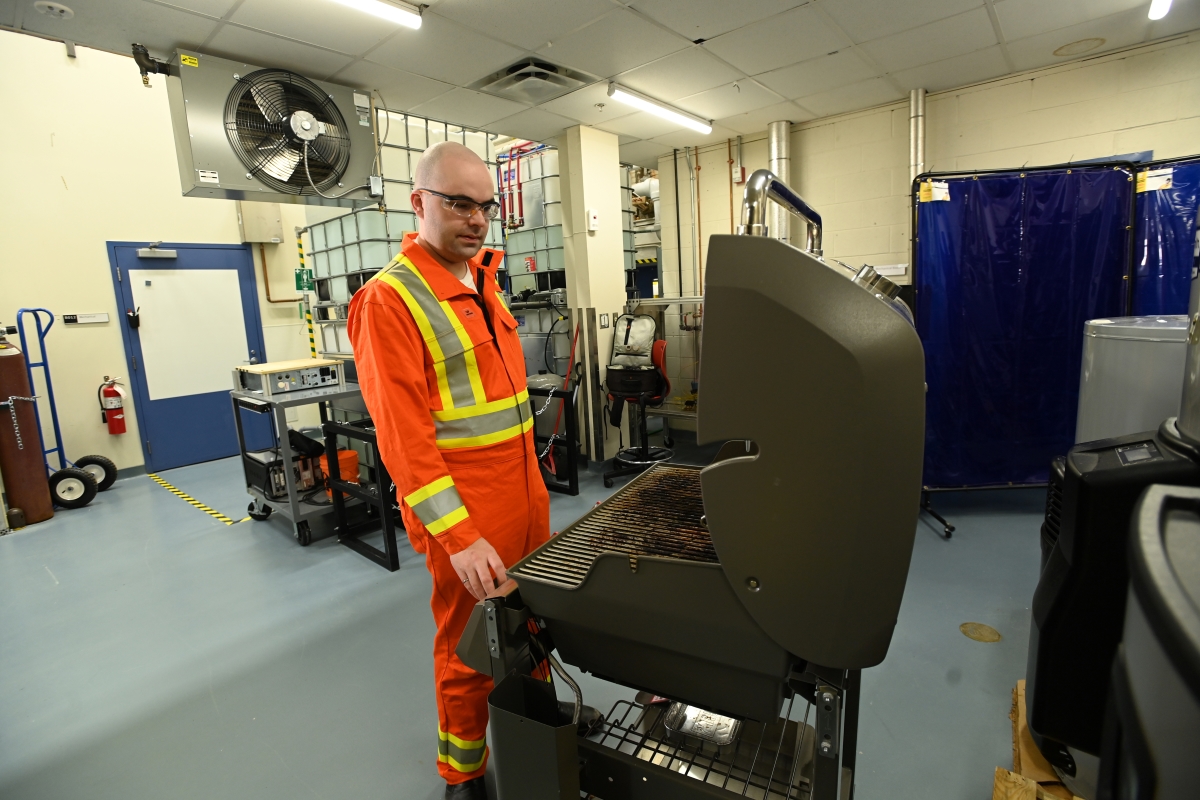
âWhat interests me about this is the chance to focus on research that actually makes a difference in the here and now in the world,â he says.Ìę âThe research that is being done on climate change is amazing, but so much of it wonât be seen until five, ten years down the road. What we really want to do is to do something right here, right now that can lower emissions.â
Recent News
- 2025 Capstone Poster Expo
- ±«Óătv Engineering Students Lead the 2025 Canadian Engineering Competition
- âA painless flash of lightâ: Biomedical Engineering student wins 3 Minute Thesis
- Sparking a Passion for Indigenous Engagement in Engineering
- 2025 Engineering Student Experience Showcase
- Celebrate World Water Day
- FirstâYear Student Takes Full Advantage of Opportunities at Dal Engineering
- Engineering a New Future: Kaitlyn Woodworthâs Journey Beyond Soccer

